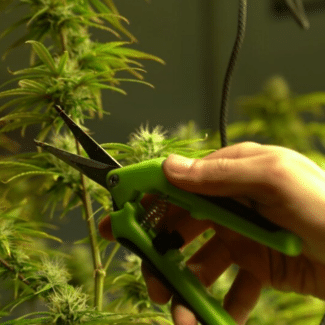California Cultivators & Price Compression: Tips for Riding It Out
California’s cannabis industry, once a beacon of growth, is now grappling with significant price compression that threatens the viability of cultivators. As the market faces challenges from illicit competition, high taxes, and evolving consumer demands, strategies for adaptation and survival become essential. This article explores the current landscape, potential impacts, and actionable insights for cultivators aiming to navigate these turbulent times effectively.

California is often referred to as the domestic mecca of cannabis. Between the state’s early adoption of both medical and recreational cannabis and the famed growing region of the Emerald Triangle, cannabis should be a thriving industry. But things in the Golden State are less than the gold standard, with cultivators facing a serious price compression. Here’s what’s going on.
California and Its Cannabis Story
California was the first state in the nation to legalize medical cannabis nearly 30 ago in 1996. Twenty years later, the state legalized recreational marijuana in 2016. But the legal industry struggled to thrive almost immediately. The illicit market has thrived in the seven years since weed was legalized. In fact, one report estimates 80% of the market is still underground.
This is just one of the challenges aspiring cannabis cultivators face. A majority of the cities in California have banned the sale of cannabis, driving consumers back to the illicit market. The state has imposed high taxes on products, making cannabis cheaper from black market sellers. And competition is fierce. If you’re a cannabis cultivator, it can feel like the deck is stacked against you.
California Cultivators Experiencing Increased Cannabis Price Compression
Price compression is a finance term that can mean slightly different things in different scenarios. In cannabis, it means “the falling prices at which products are being sold” when prices and profits are being driven down. Cannabis price compression at the cultivation level affects every stage of the cannabis supply chain. While it ultimately reduces the cost for the end consumer, it makes it incredibly difficult, if not impossible, for companies to make a profit and stay in business.
In 2022, both wholesale and retail cannabis prices plunged to all-time lows, dropping more than 50% from 2021 highs. Legal cultivators reported huge losses, and everyone had a different idea of how to get out of the hole. While prices were again on the upswing as of January 2023, it was still a far cry from where it had been.
Wholesale prices on flower are currently hovering around production costs for small growers, meaning at best, they can only hope to break even. It’s not exactly the green rush California residents were promised. And with no solution in the immediate future, most cultivators feel they are simply holding on and trying to ride out the storm.
But not everyone can afford to do that. According to the state’s Department of Cannabis Control, more than 1,400 cultivators had left the regulated market between January 2021 and March 2023, a 16% decrease. Unfortunately, this is also good news for remaining cultivators because it decreases competition and market saturation. More than one solution for increasing prices is to reduce the number of suppliers.
It’s not only in the legal market that prices are falling; the black market is also seeing price decline. This is little comfort to licensed cultivators who are battling the cost of taxes and doing business in cannabis, but it does show how widespread this issue is.
What California Cultivators Can Do to Ride It Out
No trend in any industry lasts forever. One of the many factors influencing California cannabis price compression is the federal prohibition of the plant, and this, too, will not last forever. Small changes can make a big difference daily so that you can ride out the storm of price cultivation with a little more assurance of safety.
Use science to your advantage
Some costs in cannabis are fixed, like electricity and labor. But some costs can be reduced, like operating expenses and cost per grows. Grow technology has seen major advances recently as more commercial grow facilities come online nationwide.
From adopting vertical cultivation and implementing closed watering systems to reduce water costs to systemizing the cloning and phenotype hunting processes, there are many ways that California cannabis cultivators (and indeed growers across the country) can reduce some costs associated with growing.
Embrace change
Adopting new growing practices can feel nerve-wracking. But just as the transition from HFLs or HEDs to LEDs helped growers transform their cultivation space, so too can new technologies. Change can be as simple as growing novel cultivars or as complex as creating a smart grow space. Embracing change, especially advances in grow technology, can make a big difference in your profit margins down the road.
Adopt efficiency practices
Many cannabis cultivators have efficiency and sustainability top-of-mind. Ensuring proper drainage is crucial for keeping grow costs down to reduce the chances of standing water and the problems it can cause. LED lights are standard with most grow spaces, but they should be adopted if they haven’t been already.
Stick with best practices
It’s not contrary to sticking with best practices while embracing change — it’s about picking and choosing. Best practices are called such for a reason — because most people agree it is the best way to do or avoid something. Whether it’s health and safety in a grow room, PPE in a processing space, or general business best practices, a time of turbulence is the time to decide where you can afford to take risks and try new things and where you need to stick with what’s tried and true.
Have a safety net
Businesses have no greater safety net than a comprehensive risk management plan. Thinking through your business’s risks from every angle can be intimidating and overwhelming for even the most experienced operators, but it is equally as important.
A risk management plan has five steps that walk you through identifying, analyzing, and managing your risk. Things that may seem simple, like comprehensive insurance coverage, can slip anyone’s mind in managing business. Additionally, a cannabis insurance broker can be an asset to your risk management by bringing a wealth of knowledge on the industry and how to stay best protected.
Build a trustworthy ecosystem
Your growing facility is the center point of your costs. However, your partnerships and the ecosystem you create can also impact your bottom line. Whether it’s a solid supply chain, secure vendors, or supportive peers, the people you surround yourself with play a vital role in your operation’s success. So, take the time to vet business partners and know who is on your side.
Know this won’t last forever
Headed into 2023, some companies think the California market has made it to the left side of the bell curve. Glass House told investors in February that they were selling product faster than they could grow it, and prices were once again on the rise.
How Cannabis Price Compression Could Impact the Future
It’s been a volatile past few years for California cultivators — here’s what we expect to see this year.
Consolidation
Whether brands are consolidating, getting bought out by larger companies, or simply ceasing existing in the market altogether, California consumers can expect fewer brands, particularly small ones, on shelves moving forward. With such market volatility and price compression, smaller businesses are the first to go. Several industry experts expect consolidation to be the name of the game in 2023.
Less Brand Variety
A decrease in brand variety also leads to a reduction in product choice. Price compression hurts everyone, and many dispensaries will be looking to invest in only the best-performing products moving forward. This will, in turn, decrease the number of new products coming to market as it becomes harder to get shelf space and prove popularity.
Increase in product creativity
But on the other hand, necessity is the mother of invention, and a reduction in brands or products coming to market means an increase in creativity for the ones who do. Breaking through the noise and capturing consumer attention from the get-go requires a new, different, and eye-catching product. What that means is up to brand interpretation.
Rest assured that this price compression won’t last forever, and you have what it takes to weather the storm. Protecting your cannabis company can seem confusing; however, we’re a full-service insurance brokerage working with carriers worldwide to offer you the best coverage possible. We’re here to help! Please reach out to us today by emailing [email protected] or calling 646-854-1093 for a customized letter of commitment or learning more about your cannabis insurance options.



